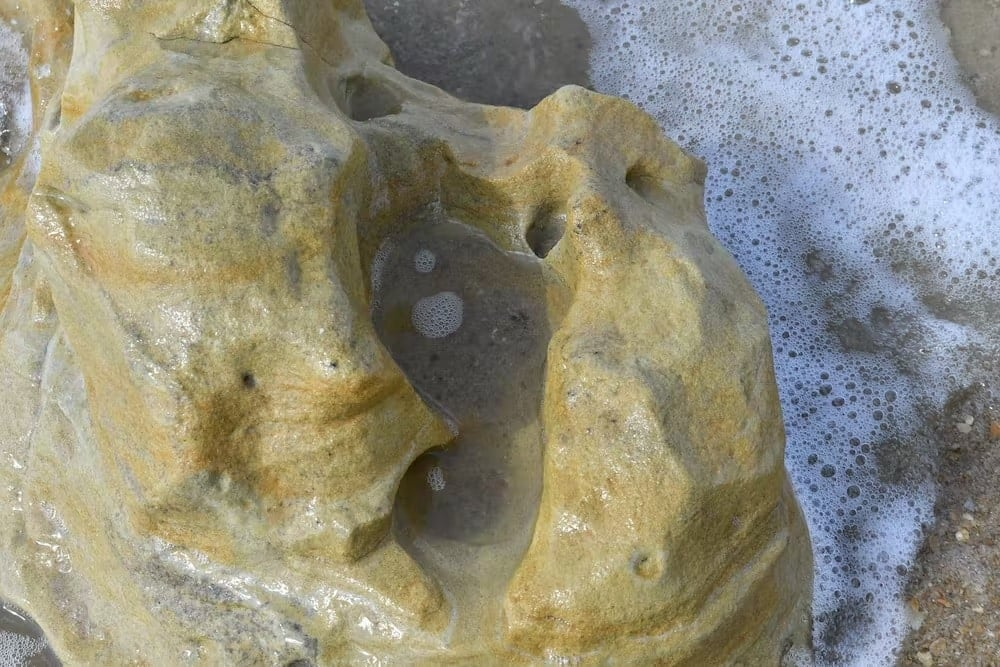Neanderthal footprints in Spain could be 275,000 years old

A little over a year ago, scientists reported on a large area at the foot of the Asperillo cliff, on the coast of the Doñana Natural Area in Huelva, Spain. There, along with numerous animal footprints, other footprints had been found – those of hominids. Until then, the only time reference that allowed the age of the site to be established was the dating of one of the dunes that covered the surface to around 106,000 years ago. The researchers dated them in line with the environment in which they were found, and the first hypothesis was that they belonged to Neanderthals, who lived in the Upper Pleistocene. However, in the course of the investigation, they sampled the surface where the footprints were found, and the dunes above. It turned out to be about 295,800 years old (Middle Pleistocene)—this is to say, much earlier than previously thought.
The intelligence of swine
Over the past few decades, research has demonstrated pigs’ capacity to comprehend symbolic language, plan for the future and discern the intentions of others. Studies have found them to rival chimpanzees in their ability to learn and play joystick-operated video games, despite the fact that their feet and snouts are inevitably less adept at handling the mechanisms. “The average intelligence of a pig on our farm is somewhere between a four-year-old and a fourth-grader,” says Greg, who insists that humans have not grasped the depth of their internal lives. Measuring nonhuman intelligence is a sticky business, but those who try typically categorize swine alongside dolphins, elephants and higher primates in terms of memory, spatial reasoning and capacity for abstract thought.

Buddhist temple's monks are all defrocked due to meth use
A Buddhist temple in central Thailand has been left without monks after all of its holy men failed drug tests and were defrocked, a local official said Tuesday. Four monks, including an abbot, at a temple in Phetchabun province's Bung Sam Phan district tested positive for methamphetamine on Monday, district official Boonlert Thintapthai told AFP. The monks have been sent to a health clinic to undergo drug rehabilitation, the official said. "The temple is now empty of monks and nearby villagers are concerned they cannot do any merit-making," he said. Merit-making involves worshippers donating food to monks as a good deed.

The judge and the case that came back to haunt him
None of Anthony Kline’s colleagues had ever seen it happen. The most senior justice on California’s First District Court of Appeal, Kline was asking to be transferred to the juvenile bench, at the advanced age of 83. Juvenile was the scrappy place you started a career, not the triumphant place you ended one. But after four decades in appeals, Kline was feeling estranged from real life. He wanted to spend a year in juvie before retiring. Five weeks into his new role, Kline learned about a case coming his way, one in which the defendant was not a minor at all. She was a 58-year-old woman. The defendant had served 41 years for a crime she committed at 17. Her name was Jamesetta Guy. Kline recognized it.

How a cosmic collision changed the life of Ann Hodges
She wished it hadn’t hit her. Ann Hodges had made that clear. The reserved woman, an Alabama native, told her then-husband she’d wished that the meteorite had burned up in the atmosphere. Or maybe just landed somewhere up the road. Or if the landlady wanted it, as she had argued in court, maybe it should have just hit her instead. But God had other plans, Hodges later said, and on a November afternoon 68 years ago, the meteorite smashed through the roof of her Sylacauga home, bouncing off a console radio and striking her as she slept under a quilt on the living room sofa. “God intended it to hit me,” Hodges reportedly said.

The most dangerous film in the world
Three days after the explosion and meltdown of Chernobyl’s Nuclear Reactor Unit 4 on April 26, 1986, Soviet filmmaker Vladimir Shevchenko was granted permission to fly over the 30-square-kilometer site known as the Exclusion Zone. His assignment was to document the cleanup operations being carried out by Ukrainian workers and volunteers, most of whom would eventually succumb to the extraordinarily high levels of radiation they were exposed to while trying to contain the disaster. When Shevchenko’s 35mm footage was later developed, he noticed that a portion of the film was heavily pockmarked and carried extraneous static interference and noise. Thinking initially that the film stock used had been defective, Shevchenko eventually realized that what he had captured on film was the image and sound of radioactivity itself.

Lucky's last run
They were an unlikely mix, the two marathon runners. The salesman was 57 years old, an ultrarunner and entrepreneur who owned five companies and had started and sold a dozen others. He lived in Jacksonville, Florida, with his wife of 29 years, in a 5,000-square-foot house on the Intracoastal Waterway. The chef was 59, divorced for 30 years, had been living with his mother in Sheepshead Bay, Brooklyn, and was soon to be homeless. He was a lifelong lover of couches and recliners, a very heavy drinker when he drank, overweight, and so slow on his feet that his childhood friends would invite him on their capers because they knew he—and not they—would be caught. The dog’s name was Lucky.

Mount Etna blows perfect smoke rings
Mount Etna blowing perfect smoke rings during a volcanic eruption.
— Wonder of Science (@wonderofscience) November 23, 2022
Credit: Geoff Mackleypic.twitter.com/qSrDsCUUbN



